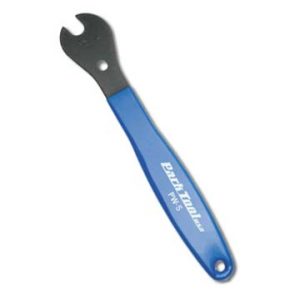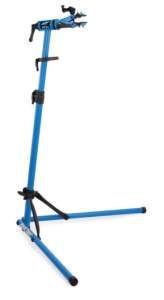Amanda Whittington is an accomplished adventure cyclist, having done some of America’s iconic bike races, century rides, gravel grinders, cross-country races, and is currently training for track racing. A ride leader and organizer, Amanda is passionate about cycling and teaching others, and works with beginner riders, teaching them group riding and bike safety as well as basic bike know-how.
You don’t need an entire bicycle workshop to take care of your bike. But having a few essential tools on hand will help you do some basic bike maintenance and minor repairs, allowing you to fix things quickly and avoiding higher bike shop repair costs. In addition, the right tools can help you salvage a ride after a minor mechanical issue or keep your bike riding smoothly on a daily basis. Many of these tools can stay right in your saddle bag so you can take them with you on a ride.
In this article, we’re going to talk about the 10 best tools a beginner or intermediate cyclist should keep on hand. We’ll give you a brief idea of how and when to use them and then talk about a few more advanced tools you may want to invest in, as well. Let’s get started.
Tools to Change a Bike Tire
Lucky for me, my first flat didn’t happen until I rolled right into my driveway, and I was able to change it in the comfort of my home. So hopefully, you won’t ever have to change a tire when you’re out on the road. But unfortunately, flats do happen, and it is better to be prepared to change a flat both on the road and at home.
Tire Pump

Every cyclist needs a tire pump. Whether you have tubeless tires or tubed tires, you still need to check your tire pressure before every single ride. You’ll find the recommended tire pressure written on the sidewall of your tire. If you’re riding on hard, flat surfaces or you’re a heavier rider, stay towards the top end. And if you’re riding in the rain or are a lighter rider, you can stay towards the lower end. With a little practice, you’ll find that sweet spot of just the right tire pressure for you.
You’ll want a good quality floor-style pump to keep at home, but you might also want a mini-pump to keep on your bike or in your saddle bag so you can fix a flat tire if it happens on the road or trail.
Tire Levers
Tire levers typically come in a pack of three. If you have a flat, you’ll need tire levers to get a tough tire off the rim to change the tube, so it’s best if you can pack them in your saddle bag. Bonus, if they stay in your bag, you’ll always know where they are when you need them. It’s better to only use tire levers for tire removal. If you try to use levers when installing the tire, you could pinch the tube and cause a flat.
Patches
If you use tubes in your tires, a patch kit can be useful. The easiest patches to use are self-adhesive. They’re also easy to carry in your saddlebag that way. Many cyclists skip the patches, though, and just carry spare tubes instead.
Sealant and Plug Kit
If you don’t have tubes and are running tubeless tires, you’ll want to have sealant and potentially a plug kit. Tubeless tires are great because they can reseal themselves if they get a small puncture. However, if the puncture is too large for the sealant, you’ll need a plug kit to fill the hole. Plug kits are small enough to carry in your saddlebag, too.
Tools to Work on Your Bike
You may need to make some minor adjustments or repairs to your bike. Here are a few tools you might want to keep on hand for those quick fixes that will help your ride go more smoothly.
Chain Wear Indicator Tool
Over time, your chain will stretch and wear out. Riding a bike with a stretched or worn chain will eventually damage your cassette and chain ring, which can be an expensive repair. So even if you don’t know how to replace your chain, use a chain wear indicator tool to check it regularly. Once your chain begins to show signs of wear, you can take your bike to the shop for a new one or learn how to change it yourself. Changing your chain when needed will help prevent more costly repairs.
Allen Wrench Set
Bikes use Allen wrenches, and you will want a full set. You might be surprised at the number of different sized Allen wrenches that a single bike could call for.

You may want to make some adjustments to your bike when you’re out on the road or even just sitting at home. For example, if you’re out on a ride and your seat slips, you’ll need an Allen wrench to tighten it back up. Or if you need to adjust the position of your handlebars, an Allen wrench can help with that, as well.
It’s critical to check your headset periodically because a loose headset can make it difficult to steer safely. With an Allen Wrench set, you can easily tighten up your headset and any other loose fittings on your bike.
Torx Wrench Set
Some bike parts will require a star-shaped wrench rather than an Allen wrench. For these fittings, you’ll need a Torx wrench set. The most important is the T25. You’ll likely need the T25 if you change your brakes or your chainring bolts.
Pedal Wrench
At first, I found pedal wrenches to be highly intimidating. But then I purchased a set of Garmin Rally Power Meter Pedals. I had to learn to move the pedals back and forth between my track bike and my road bike. The pedal wrench makes it easy to remove pedals and put them on another bike. Keep in mind that some pedals don’t use a pedal wrench, but instead call for a large allen wrench (all the more reason to have a full Allen wrench set). We use this basic pedal wrench in our shop.
Torque Wrench
A torque wrench measures how much pressure, or torque, you are using when you adjust the fittings on your bike. For example, when I adjust the saddle height on my Quintana Roo, I need to be careful not to over or under-tighten the bolt that holds the seat post. With a good torque wrench, I can preload the right amount of tension onto the wrench so that I don’t strip out the bolt or crack the fitting.

This is even more important when it comes to carbon fiber bikes, for which “over-torquing” can cause a major crack that is not easily repaired. Carbon is an expensive material — and a big reason why bikes cost so much these days — and you definitely want to take great care when cranking bolts or screws down on your carbon fiber bike.
Think of a torque wrench as a way to tighten each bolt enough to be safe to ride, but not so tight that you damage the bike. We like the Park Tool ratchet-style wrench (pictured, and found here).
Multi-Tool
It’s a great idea to keep a versatile bicycle multi-tool in your saddlebag at all times. Then, if you’re out on a ride and have some kind of a mechanical issue, you might be able to fix it so you can at least get yourself back home without calling for an Uber. And if you don’t know how to use the tools yet, carry it anyway because there’s a good chance a riding mate or passersby will be able to help if you have the tool!
Those are just a few tools to get you started with a basic bike toolbox. However, Trip Whitman, manager of Halter’s Cycles in Montgomery, NJ, also recommends some more advanced tools. For example, he recommends a chain whip and cassette Tool for working on your cassette (gears on the rear wheel), Bi-Pass Cutters for cutting cables clean, and a Chain tool and chain pliers for doing work on chains.
More Advanced Bike Tools
You might want to consider adding a few more advanced tools to your toolbox, as well. Trip Whitman, manager of Halter’s Cycles in Montgomery, NJ, recommends that a cyclist has some more advanced tools within easy reach. He recommends a chain whip and cassette Tool for working on your cassette (gears on the rear wheel), Bi-Pass Cutters for cutting cables clean, and a Chain tool and chain pliers for doing work on chains.
Chain Whip and Cassette Tool
If you need to change your cassette, you’ll definitely want a chain whip and cassette tool. A chain whip looks like a handle with a couple of pieces of chain on it. You wrap the pieces of chain around the cassette and turn it to remove the cassette from your wheel. Then you can put on a new cassette – such as one with better climbing gears.
Chain Tool
If you need to change or shorten your chain, you’ll need a chain tool. A chain tool pushes out the pin that connects to chain links together. So, for example, if you need to shorten your chain, you can push out the pin to remove links, then use it to connect the chain back together. We like Park Tool’s basic chain whip, which you can find here.

Chain Pliers
If your bike has a master link, it will be easy to remove and replace your chain with a pair of chain pliers. These help you open the link and then close it again. It’s a great idea to carry a small set of chain pliers and a spare master link with you in your saddle bag.
Bi-Pass Cutters
Over time, the cables that control your brakes and shifters can stretch, which means your brakes and gears just won’t work as well. So there may be a time when you need to replace your cables, as well. In this case, bi-pass cutters will help you get a nice clean cut, so the cables don’t fray.
Other Bike Tool Considerations

All of the tools I listed above are easier to use if you have a proper bike stand. You want to be sure you don’t get a bike stand that is wobbly or unstable. We like the Park Tool bike stands, which don’t harm your bike but are stable and sturdy when working on your bike.
Finally, you may want to keep a few spare parts in your toolbox. An extra bike chain, brake pads, and valve cores (if your tires are tubeless), spare tubes, and stem caps are handy to have on hand for when you need them. If you have the space, a bike stand to work on your bike makes all this maintenance a whole lot easier!
That pretty much does it. As long as you are not trying to do full bike rebuilds, retrofit disc brakes, and trying to true your own wheels and spokes, you should be able to get by with a basic level of tools for a really good home bike shop.







